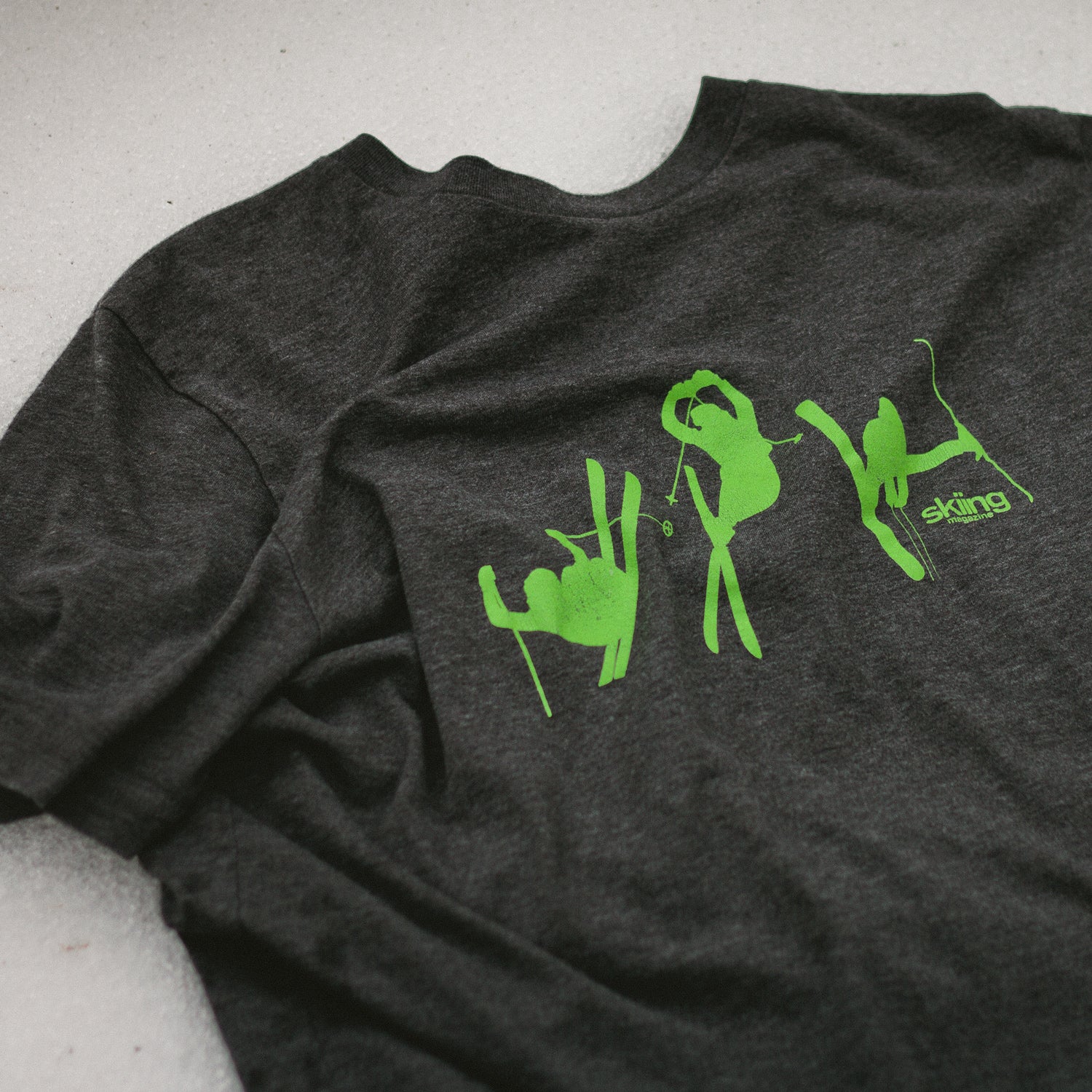After nearly 70 years of publishing, Skiing magazine printed its final issue this winterÔÇöultimately consumed by its milquetoast longtime sister title, the bigger and marginally more profitable SKI magazine.
If youÔÇÖre confused about the difference between and magazines and why a series of publishing houses would have bothered carrying both titles for the past 20-plus years, youÔÇÖre not alone. I was the editor of Skiing magazine for six years, in the early 2000s, and even I was never clear on the reasoning. But for most of its long history, Skiing offered a unique and, at times, vital take on the sport.
Like many vertical titles, Skiing started out as a glorified regional newsletter for skiing purists interested less in the pomp and luxuries of the early days of the sport than in just getting out and ripping around in wool pants and leather boots. The magazine was big on instruction (the sport was young), gear, and new places to ski, of which there were legion in the years after World War II, as 10th Mountain Division troops returned from Europe and pioneered the West and hundreds of local hills sprang back to life in the Northeast.
In the winters that followed, SKI (still a separately owned rival at that time) focused on already stodgy ski racing and stuffy resorts, while Skiing focused on everyday skiers. The positioning nicely set up Skiing as a mouthpiece for what came next: the sportÔÇÖs first truly American movement (as opposed to European-influenced racing), the Hot Dog era of the late 1960s and early 1970s.
As hair got longer in the Age of Aquarius, skis got shorter and the sport got fun. My all-time favorite Skiing cover was a shot of a soaring hippie in skin-tight stretch pants splayed out against a cobalt sky in a joyous backscratcher. We made a T-shirt out of it. The pages were filled with images of beautiful women in braids snaking down mogul fields or basking in the sun in bikini tops. The ads featured western-looking dudes wearing nonironic mustaches, leaning against Chevrolet Impalas with their skis or enjoying peppermint schnapps from bota bags. General advertisers wanted to be affiliated with the sensual, vibrant, rebellious, athletic-for-athleticismÔÇÖs-sake movement as seen through the pages of Skiing. The sport, and the magazine, boomed. I still see one of SkiingÔÇÖs ad reps from that golden eraÔÇöhe retired to Baja off the ad revenues he made, but he summers in Colorado. He and his mustache drive around Baja in a golf cart packed with ice-cold beers.
My favorite Skiing story from the early 1970s was written by Bob Jamieson. Neither flowery nor tension-riddled, the narrative simply Me & Truck┬ásimply┬ádocumented Jamieson's┬áextended road trip as a penniless ski bum wandering from resort to resort, sleeping in his truck, discovering new places to ski, and meeting kindred spirits. That story, and the magazine, captured what it was to be a skier in that moment in time. ThatÔÇÖs not easy to do.
But skiing trends come and go, and the Hot Dog movement faded like your grandfatherÔÇÖs padded sweater. Powder skiing was the next craze, captured almost spiritually by Powder magazine in its early years. Blissfully, that subset never died. The extreme skiing of the 1980s followed, but the films of Greg Stump captured that movement better than any one print title. Then snowboarding came along, and the New York Times went so far as to say the sport of skiing was dead. (Yeah, and the Gray Lady also predicted Hillary would trounce the Mango-in-Chief.) For a time, Freeskier magazine rode a youthful wave of park and pipe skiers borne out of the demise of mogul skiing, but freeskiing is now a niche of a niche sport. Skiing participation has flatlined for 20 years. Snowboarding, sadly, is in decline. Backcountry skiing has the energy now, but its high cost of entryÔÇödying in an avalancheÔÇöwill meter participation as the larger sport awaits the next revolution.
Over the decades, SkiingÔÇÖs relevance rose and fell with the trends and the times, but what ultimately killed it was its own success. As the sport of skiing lost its appeal to general advertisers in the late 1980s and skiing participation fell in the early 1990s, the gravy days ended, but the corporations that owned SKI and Skiing couldnÔÇÖt let go. In their attempt to regain those car and booze ad buyers, they did what most mainstream magazines do: artificially inflated their circulations. Sign up for a coin-operated ski race or buy a ski pass to Vail, and you wouldnÔÇÖt get charged for Skiing magazine again. Paid subscribers left, the general ads never came back, and now FacebookÔÇÖs easily quantifiable ROI (return on investment) is taking a mortal swipe at what remains of the sort of brand building that magazines of all types were built on. It didnÔÇÖt help that Bonnier Corporation, the multinational prior owner of Skiing before current owner AIM Media, stopped printing Skiing for a season in some reckless experiment in so-called desktop publishing.
But SkiingÔÇÖs deathblow was even dumber than that. When independent agencies survey consumers to determine who is reading what magazine, the title SKI shows up before the title Skiing. Confused, readers pick the first one. SkiingÔÇÖs numbers suffered tremendously. Subsequently, the ad sales team tasked with selling it treated the title as an afterthought. And now itÔÇÖs gone. Killed by a gerund.
I, for one, will miss it. Whether itÔÇÖs the Atlantic Monthly or ║┌┴¤│ď╣¤═°, the New Yorker or the oft-overlooked vertical Skiing, magazines, by the very nature of their slower production schedules, produce richer narratives than newspapers and websites. Skiing owns its share of great reads from the past 70 years, but from my short tenure there, I think back to Kevin FedarkoÔÇÖs, to profile two indefatigable optimists running a ski rental shop in the prettiest war zone on earth. That story won a Henry R. Luce Award from Time Inc. (SkiingÔÇÖs owner at the time) and inclusion in the Best American Travel Writing compilation. We also sent an Idaho woman, writer Tracy Ross, ; hired a female war photographer to accompany writer Rob StoryÔÇödressed in a gorilla suitÔÇöto stage a ÔÇťguerillaÔÇŁ attack on the private ski area called the Yellowstone Club; profiled a (seriously); and debated important stories like which is more vital to the sport of skiing, nachos or wings? And we did all this while admitting that climate change was an existential threat to our raison dÔÇÖ├¬tre. A tradition, I should say, that was carried on by subsequent Skiing editors Sam Bass and Kim Beekman.
But perhaps my fondest story was written by Jon Billman. It was about two brothers IÔÇÖd met many years before in Montana. They were skiers, of course, but for work they were long-haul truckers prone to stopping their rigs on mountain passes and next to resorts whenever a storm whipped up enough powder for a few stolen turns. ÔÇť,ÔÇŁ we titled the story. It wasnÔÇÖt a flowery or tense narrativeÔÇöit simply captured what it meant to be a skier in that time and place.
The magazine had a voice, but more important, it gave a voice to skiers. And thatÔÇÖs all anyone ever asked of Skiing.
Marc Peruzzi is a contributing editor to ║┌┴¤│ď╣¤═° and the editorial director of Mountain magazine.


